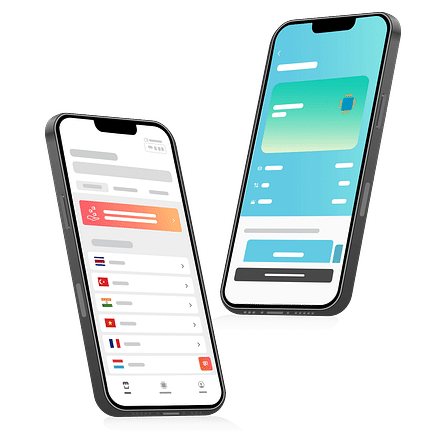Before COVID-19, digital nomadism was something of a niche lifestyle.
There might have been one or two articles on how amazing it was to work remotely in a foreign country, but it was still widely regarded as an opportunity for just a lucky few.
These days, remote work is practically the norm. And even with travel restrictions still mostly in place, people are taking a closer look at the chance to live and work in a foreign country.
Digital nomadism is going mainstream almost overnight.
Here’s what that means both for new nomads and inveterate expats living abroad.

The Rise of the Remote Worker
At one point, it’s estimated that two-thirds of the U.S. workforce went remote during the pandemic. By the end of 2020, a quarter of Americans seemed geared to remain remote even as others went back to the office.
In short, remote work is here to stay. That’s thrilling for both employees and employers.
There’s a significant amount of research showing that remote work has many positive impacts on worker well-being and productivity. Overwhelmingly, companies report that remote workers:
- Are much more productive. You’d think we’d all slack off while working in our PJs, but research shows that remote workers are 35 to 40 percent more productive than their in-office counterparts.
- Are happier. Whether it’s the more customized workspace or the lack of commute, remote workers demonstrate lower levels of stress and more positive moods.
- Stay with the company longer. Forrester has found that offering the ability to work remotely has become critical for retaining employees. Without the option, they’ll move on to jobs that offer it.
The very real benefits of remote work mean that the number of positions that are remote will continue to grow. But does that mean we’re about to see many more digital nomads out there? Maybe – here’s why or why not.
How COVID-19 Has Changed Travel
The pandemic has irrevocably changed our world on many levels, not the least of which is the way we travel.
It’s a good and bad thing.
On the one hand, fewer flights and vehicles in use has meant improvements in air quality and the reduction of carbon emissions. On the other, strict measures have frustrated travelers and sometimes forced airlines to ban people for refusing to follow the rules.
If you’re eying the chance to work abroad, keep in mind that COVID-19 has changed travel as we know it – probably for good. Now is a great time to start planning how you’ll handle the new requirements and keep yourself safe.
During lockdown, airlines all but stopped international flights. That’s a big part of the reason the airline industry lost 45 percent of its revenue in 2020. While flights are coming back, travelers aren’t keen to hop onto the next plane for several reasons:
- Entry restrictions. Most countries have either banned foreign travelers or have quarantine requirements in place. This may include staying at a government-selected hotel.
- Travel insurance. Many countries now require travelers to present proof of health insurance before issuing a visa. That will often mean buying special travel health insurance if your main insurance doesn’t cover injuries or illnesses abroad.
- A bigger emphasis on sustainability. One of the more positive changes emerging from COVID-19 has been a shift in consumer values. We’ve collectively become more concerned about sustainability. Air travel is well known as a high-pollutant form of travel, which may cause people to think twice and airlines to alter their services as a result.
Tips for Digital Nomads Who Travel After COVID-19
So, you are or you want to become a digital nomad in the future, COVID-19 or not? You’ll be joining the swelling ranks of people discovering how wonderful it is to live and work abroad.
Here are a few things to consider before you plan your next travel trip after COVID-19…
1. Research Your Entry Requirements
Knowing your visa requirements can help you plan your trip. Many countries allow individuals from certain countries to stay 30, 60, or even 90 days without a visa. Likewise, some countries now have specific visas for digital nomads.
However, make sure you can get into the country you’ve chosen. Many countries still have restrictive entry requirements to reduce the spread of COVID-19.
Additionally, visa requirements have changed quite a bit due to the pandemic as well as political situations around the world. For example, American travelers now must apply for an ETIAS to the Schengen Zone.
Pro tip: If you enter without a visa, most countries will require you to have an onward ticket purchased.
2. Embrace Digital Solutions
Contactless transactions are your friend when traveling as a digital nomad. Not only do they save space in your luggage, but also keep you safe from physical transmission. We recommend that you embrace digital solutions as much as possible. DO:
- Get an eSIM. This means you won’t have to deal with physical SIM cards or go into crowded marketplaces. Instead, you can visit online eSIM marketplace like Airalo to access connectivity on demand.
- Use digital tickets. Many airlines already offer e-tickets, but COVID-19 has caused other forms of transportation to adapt. Look into whether your train, bus, or car rental offers digital-only transactions to reduce contact with other people.
3. Plan Regional Trips
Regional trips are easier to plan and travel than willy-nilly wandering. By staying in one geographical area, you’ll make your travel much cheaper and more manageable. When you do this, we also recommend that you:
- Look into alternative forms of travel like busses or trains.
- Get a regional eSIM to simplify your mobile data.
- Stay longer in places to reduce stress and really get the chance to explore.
4. Have a Plan to Get Home (and for Once You’re Home)
Lastly, make sure you’re able to get home from your chosen destination. If you inadvertently travel to a country for which entry has been restricted by your own country, you may find yourself subject to strict quarantine measures. Worse, you might find yourself forced to enter through a third country.
Here’s a map of countries where entry restrictions persist. Monitor it or check others during your travels to make sure you’ll be able to get to the next place. Likewise:
- Use a COVID-19 contact tracing app to identify your risk of exposure and plan to quarantine if needed when you get home.
- Check the health safety measures of airlines before you fly to make sure you’re comfortable with them.
- Communicate with your boss before you travel so they’re aware in case delays happen and you’re not back in the digital office at the expected time.
What Will the Future Look Like for Digital Nomads After COVID-19?
A lot of things have changed thanks to COVID-19, but it’s not the end of digital nomadism, it's rather a beginning. In fact, the lifestyle will become popular after the pandemic ends. That means if you want to become a digital nomad, now is a great time to start planning. With so many companies welcoming remote workers, digital nomadism is here to stay and flourish.
Quick and clear communication is key in the online workspace. No matter what happens, make sure you can stay connected and are communicating with your boss, friends, or family. Airalo can make a huge difference in whether your time as a digital nomad is a dream experience or a travel nightmare.
Check out the eSIM marketplace now to browse through available data package.

